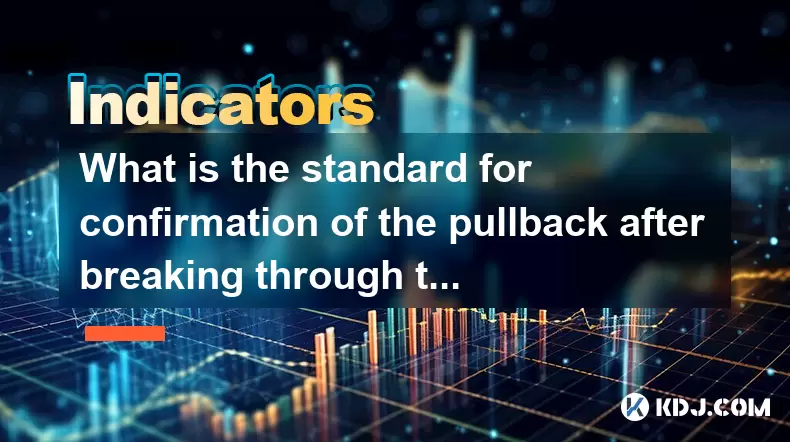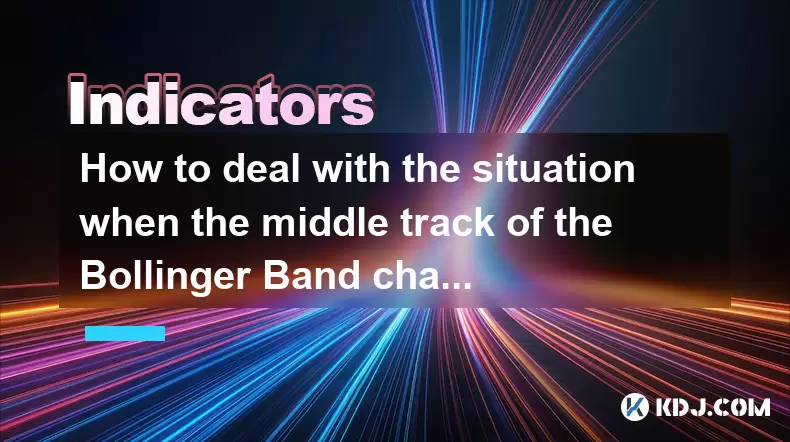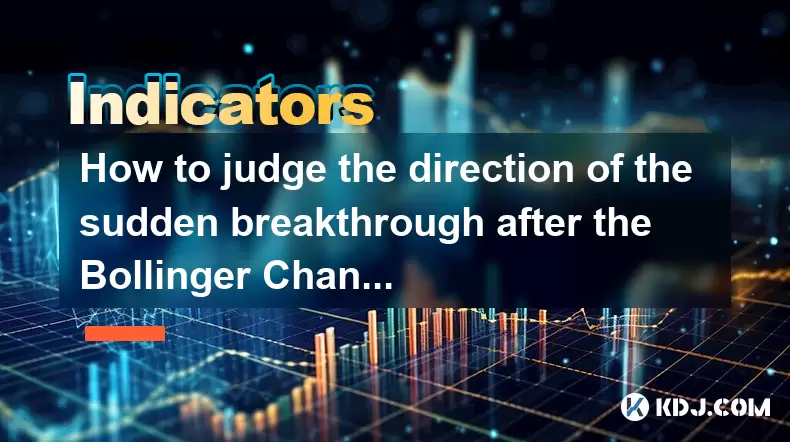-
 Bitcoin
Bitcoin $101,898.5005
-0.75% -
 Ethereum
Ethereum $2,258.1125
-1.07% -
 Tether USDt
Tether USDt $1.0004
0.01% -
 XRP
XRP $2.0178
-2.93% -
 BNB
BNB $624.0243
-1.53% -
 Solana
Solana $134.3298
-0.90% -
 USDC
USDC $0.9999
0.01% -
 TRON
TRON $0.2675
-2.05% -
 Dogecoin
Dogecoin $0.1538
-1.96% -
 Cardano
Cardano $0.5482
-1.11% -
 Hyperliquid
Hyperliquid $35.5636
5.45% -
 Bitcoin Cash
Bitcoin Cash $453.4902
-1.66% -
 Sui
Sui $2.5134
-2.97% -
 UNUS SED LEO
UNUS SED LEO $9.1292
1.77% -
 Chainlink
Chainlink $11.8457
-1.60% -
 Stellar
Stellar $0.2312
-2.73% -
 Avalanche
Avalanche $16.9721
0.29% -
 Toncoin
Toncoin $2.7549
-3.82% -
 Shiba Inu
Shiba Inu $0.0...01081
-1.10% -
 Litecoin
Litecoin $80.8250
-0.71% -
 Hedera
Hedera $0.1374
0.21% -
 Monero
Monero $305.4827
-2.36% -
 Ethena USDe
Ethena USDe $1.0006
0.00% -
 Dai
Dai $1.0000
-0.01% -
 Polkadot
Polkadot $3.2085
-3.12% -
 Bitget Token
Bitget Token $4.0845
-3.13% -
 Uniswap
Uniswap $6.3353
-1.63% -
 Pi
Pi $0.5085
-0.70% -
 Pepe
Pepe $0.0...08913
-3.82% -
 Aave
Aave $232.7090
-0.58%
Is StochRSI accurate in futures trading? What should I pay attention to?
StochRSI accuracy in futures trading varies; consider market volatility, time frame, and integrate with other indicators for better results.
May 23, 2025 at 02:29 am

Is StochRSI accurate in futures trading? What should I pay attention to?
The Stochastic Relative Strength Index (StochRSI) is a popular technical indicator used in cryptocurrency futures trading to identify overbought and oversold conditions in the market. Traders often rely on the StochRSI to make informed decisions about when to enter or exit trades. However, the accuracy of StochRSI in futures trading can vary based on several factors, and it's crucial for traders to understand these nuances and pay attention to specific elements to maximize their trading success.
Understanding StochRSI
StochRSI is a derivative of the traditional Relative Strength Index (RSI). It applies the Stochastic oscillator formula to the RSI values, resulting in a more sensitive indicator that can help traders identify potential reversals more quickly. The StochRSI oscillates between 0 and 1, with values above 0.8 typically indicating overbought conditions and values below 0.2 suggesting oversold conditions.
Accuracy in Futures Trading
The accuracy of StochRSI in futures trading is not guaranteed, as it is with any technical indicator. Its effectiveness can be influenced by market volatility, the time frame used, and the specific cryptocurrency being traded. In highly volatile markets, the StochRSI might generate more false signals, while in less volatile markets, it may be more reliable. Traders should backtest the indicator on historical data to gauge its performance in different market conditions.
Key Factors to Consider
When using StochRSI in futures trading, several factors need to be considered to enhance its accuracy and reliability. These include the time frame, the specific cryptocurrency, and the integration with other indicators.
Time Frame
The time frame used for StochRSI can significantly impact its accuracy. Shorter time frames, such as 1-minute or 5-minute charts, may produce more signals but also more false positives. Conversely, longer time frames, such as 1-hour or 4-hour charts, may provide fewer but more reliable signals. Traders should experiment with different time frames to find what works best for their trading strategy.
Cryptocurrency Specificity
Different cryptocurrencies can exhibit varying levels of volatility and market behavior. StochRSI may work better for some cryptocurrencies than others. For instance, Bitcoin, with its higher liquidity and more established market, might yield more reliable StochRSI signals compared to smaller altcoins, which can be more susceptible to manipulation and sudden price swings.
Integration with Other Indicators
To increase the accuracy of StochRSI, it's often beneficial to use it in conjunction with other technical indicators. Combining StochRSI with tools like Moving Averages, Bollinger Bands, or the MACD can help confirm signals and reduce the likelihood of false positives. For example, if the StochRSI indicates an oversold condition and the price is also below a significant Moving Average, it might strengthen the case for a potential bullish reversal.
Practical Application in Futures Trading
Applying StochRSI in futures trading involves several steps that traders should follow meticulously to maximize its effectiveness. Here’s a detailed guide on how to use StochRSI in your trading strategy:
Select the Time Frame: Choose a time frame that aligns with your trading style. For day traders, a 15-minute or 30-minute chart might be suitable, while swing traders might prefer a 4-hour or daily chart.
Set Up the StochRSI Indicator: Most trading platforms allow you to add the StochRSI indicator to your chart. Typically, you’ll need to set the RSI period and the Stochastic period. Common settings are an RSI period of 14 and a Stochastic period of 14, but you can adjust these based on your preferences and backtesting results.
Monitor Overbought and Oversold Levels: Watch for the StochRSI to cross above 0.8 (overbought) or below 0.2 (oversold). These levels can signal potential reversal points in the market.
Confirm with Price Action: Always confirm StochRSI signals with price action. Look for candlestick patterns, such as doji or hammer formations, that might indicate a reversal at the same time as the StochRSI signal.
Use Additional Indicators: Incorporate other indicators to confirm StochRSI signals. For instance, if the StochRSI indicates an oversold condition, check if the price is also touching the lower Bollinger Band for added confirmation.
Enter and Exit Trades: Based on the confirmed signals, enter trades when the StochRSI moves out of the overbought or oversold zone. Set stop-loss orders to manage risk and take-profit levels to secure gains.
Review and Adjust: Continuously review your trades and adjust your strategy as needed. If the StochRSI is generating too many false signals, consider adjusting the time frame or integrating additional indicators.
Common Pitfalls and How to Avoid Them
While StochRSI can be a powerful tool, there are common pitfalls that traders should be aware of to avoid costly mistakes. These include over-reliance on the indicator, ignoring market context, and not adjusting for different market conditions.
Over-Reliance on StochRSI
One of the biggest mistakes traders make is relying solely on StochRSI for their trading decisions. While it can provide valuable insights, it should be used as part of a broader trading strategy that includes other forms of analysis, such as fundamental analysis and market sentiment.
Ignoring Market Context
StochRSI signals should always be considered within the broader market context. For instance, if the overall market trend is strongly bearish, a StochRSI signal indicating an overbought condition might not be as reliable. Always consider the larger market environment before acting on StochRSI signals.
Not Adjusting for Different Market Conditions
Different market conditions require different approaches to using StochRSI. In highly volatile markets, you might need to adjust the sensitivity of the indicator or use it in conjunction with other tools to filter out false signals. Conversely, in less volatile markets, you might find that the standard settings work well.
Real-World Examples
To illustrate how StochRSI can be applied in futures trading, let’s look at a couple of real-world examples. These examples will help demonstrate how the indicator can be used in different scenarios and highlight its potential effectiveness and limitations.
Example 1: Bitcoin Futures on a 1-Hour Chart
Imagine you’re trading Bitcoin futures on a 1-hour chart. The StochRSI drops below 0.2, indicating an oversold condition. At the same time, the price of Bitcoin is touching the lower Bollinger Band, and a bullish hammer candlestick pattern forms. This confluence of signals suggests a potential bullish reversal. You enter a long position, setting a stop-loss just below the recent low and a take-profit level at a resistance zone identified on the chart. As the market moves in your favor, you exit the trade at the take-profit level, securing a profit.
Example 2: Ethereum Futures on a 15-Minute Chart
In another scenario, you’re trading Ethereum futures on a 15-minute chart. The StochRSI rises above 0.8, indicating an overbought condition. However, the overall market trend is strongly bullish, and the price is still making higher highs. In this case, the StochRSI signal might be less reliable due to the strong trend. Instead of shorting based solely on the StochRSI, you wait for additional confirmation, such as a bearish candlestick pattern or a divergence between the price and the StochRSI. When these additional signals align, you enter a short position, managing your risk with a stop-loss and a take-profit level.
Frequently Asked Questions
Q: Can StochRSI be used effectively in all market conditions?
A: While StochRSI can be useful in various market conditions, its effectiveness can vary. In highly volatile markets, it may generate more false signals, whereas in less volatile markets, it might be more reliable. Traders should always consider the current market environment and adjust their strategy accordingly.
Q: How often should I adjust the settings of the StochRSI?
A: The settings of the StochRSI should be adjusted based on your backtesting results and the specific market conditions you’re trading in. It’s a good practice to review and potentially adjust your settings periodically, especially if you notice a change in market volatility or behavior.
Q: Is it better to use StochRSI on shorter or longer time frames?
A: The choice between shorter and longer time frames depends on your trading style. Shorter time frames, such as 1-minute or 5-minute charts, may produce more signals but also more false positives. Longer time frames, like 1-hour or 4-hour charts, may provide fewer but more reliable signals. Experiment with different time frames to find what works best for your strategy.
Q: Can StochRSI be used as a standalone indicator for trading decisions?
A: While StochRSI can provide valuable insights, it’s generally not recommended to use it as a standalone indicator. Combining it with other technical indicators and considering market context can help increase its reliability and reduce the risk of false signals.
Disclaimer:info@kdj.com
The information provided is not trading advice. kdj.com does not assume any responsibility for any investments made based on the information provided in this article. Cryptocurrencies are highly volatile and it is highly recommended that you invest with caution after thorough research!
If you believe that the content used on this website infringes your copyright, please contact us immediately (info@kdj.com) and we will delete it promptly.
- Cryptocurrencies, Coingecko, and Trending Tokens: What's Hot Now?
- 2025-06-23 23:05:12
- FUNToken: Decoding Past Trends and Getting Started in the Gaming Crypto Sphere
- 2025-06-23 22:25:12
- BTC Price Analysis: Navigating Volatility and the Quest for a New ATH
- 2025-06-23 22:25:12
- Genesis, Bitcoin Mining, and Air-Cooled Miners: A New Era?
- 2025-06-23 22:45:12
- Coinbase's Growth and Resilience: Navigating the Crypto Landscape
- 2025-06-23 22:45:12
- Bitcoin Options Market: Bullish Bets Amidst Geopolitical Jitters
- 2025-06-23 22:51:52
Related knowledge

Is it contradictory that the moving average system is arranged in a bullish pattern but the DMI shows a decline in trend strength?
Jun 23,2025 at 11:43pm
Understanding the Moving Average and DMI RelationshipIn cryptocurrency trading, technical analysis plays a crucial role in identifying potential trends and making informed decisions. Two of the most commonly used indicators are the Moving Average (MA) and the Directional Movement Index (DMI). While both tools aim to provide insight into market direction...

What is the significance of the gap formed by the gap opening not being filled within five days?
Jun 23,2025 at 09:42pm
Understanding Gaps in Cryptocurrency TradingIn the world of cryptocurrency trading, a gap refers to a situation where the price of an asset jumps from one level to another without any trading activity occurring between those two levels. This often happens over weekends or holidays when the market is closed, and significant news or events occur that impa...

What is the standard for confirmation of the pullback after breaking through the neckline with large volume?
Jun 23,2025 at 11:28pm
Understanding the Neckline in Technical AnalysisIn technical analysis, the neckline is a critical support or resistance level that appears in chart patterns such as head and shoulders, double tops, and double bottoms. It typically connects two or more lows (in the case of a head and shoulders top) or highs (in the case of a head and shoulders bottom). W...

How to deal with the situation when the middle track of the Bollinger Band changes from support to resistance?
Jun 23,2025 at 11:22pm
Understanding the Bollinger Band Middle TrackThe Bollinger Band is a widely used technical indicator in cryptocurrency trading. It consists of three lines: the upper band, the lower band, and the middle track, which is typically a 20-period simple moving average (SMA). Traders often rely on the middle track as a dynamic support or resistance level. Howe...

Does the second golden cross of MACD above the zero axis represent the continuation of strength?
Jun 23,2025 at 08:21pm
Understanding the MACD IndicatorThe Moving Average Convergence Divergence (MACD) is a widely used technical analysis tool in cryptocurrency trading. It consists of three main components: the MACD line, the signal line, and the histogram. The MACD line is calculated by subtracting the 26-period Exponential Moving Average (EMA) from the 12-period EMA. The...

How to judge the direction of the sudden breakthrough after the Bollinger Channel narrows to the extreme?
Jun 23,2025 at 11:00pm
Understanding the Bollinger Channel and Its Narrowing PatternThe Bollinger Channel is a widely used technical indicator in cryptocurrency trading, consisting of three bands: the middle band (a simple moving average), and two outer bands that represent standard deviations from the middle line. When the price consolidates for an extended period, the chann...

Is it contradictory that the moving average system is arranged in a bullish pattern but the DMI shows a decline in trend strength?
Jun 23,2025 at 11:43pm
Understanding the Moving Average and DMI RelationshipIn cryptocurrency trading, technical analysis plays a crucial role in identifying potential trends and making informed decisions. Two of the most commonly used indicators are the Moving Average (MA) and the Directional Movement Index (DMI). While both tools aim to provide insight into market direction...

What is the significance of the gap formed by the gap opening not being filled within five days?
Jun 23,2025 at 09:42pm
Understanding Gaps in Cryptocurrency TradingIn the world of cryptocurrency trading, a gap refers to a situation where the price of an asset jumps from one level to another without any trading activity occurring between those two levels. This often happens over weekends or holidays when the market is closed, and significant news or events occur that impa...

What is the standard for confirmation of the pullback after breaking through the neckline with large volume?
Jun 23,2025 at 11:28pm
Understanding the Neckline in Technical AnalysisIn technical analysis, the neckline is a critical support or resistance level that appears in chart patterns such as head and shoulders, double tops, and double bottoms. It typically connects two or more lows (in the case of a head and shoulders top) or highs (in the case of a head and shoulders bottom). W...

How to deal with the situation when the middle track of the Bollinger Band changes from support to resistance?
Jun 23,2025 at 11:22pm
Understanding the Bollinger Band Middle TrackThe Bollinger Band is a widely used technical indicator in cryptocurrency trading. It consists of three lines: the upper band, the lower band, and the middle track, which is typically a 20-period simple moving average (SMA). Traders often rely on the middle track as a dynamic support or resistance level. Howe...

Does the second golden cross of MACD above the zero axis represent the continuation of strength?
Jun 23,2025 at 08:21pm
Understanding the MACD IndicatorThe Moving Average Convergence Divergence (MACD) is a widely used technical analysis tool in cryptocurrency trading. It consists of three main components: the MACD line, the signal line, and the histogram. The MACD line is calculated by subtracting the 26-period Exponential Moving Average (EMA) from the 12-period EMA. The...

How to judge the direction of the sudden breakthrough after the Bollinger Channel narrows to the extreme?
Jun 23,2025 at 11:00pm
Understanding the Bollinger Channel and Its Narrowing PatternThe Bollinger Channel is a widely used technical indicator in cryptocurrency trading, consisting of three bands: the middle band (a simple moving average), and two outer bands that represent standard deviations from the middle line. When the price consolidates for an extended period, the chann...
See all articles
























































































